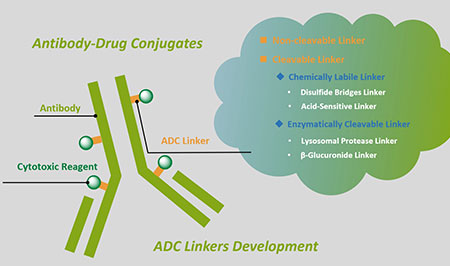1. The Search for New Anticonvulsants in a Group of (2,5-Dioxopyrrolidin-1-yl)(phenyl)Acetamides with Hybrid Structure-Synthesis and In Vivo/In Vitro Studies
Marcin Jakubiec, Anna Rapacz, Michał Abram, Krzysztof Kamiński, Gniewomir Latacz, Rafał M Kamiński, Szczepan Mogilski Int J Mol Sci . 2020 Nov 20;21(22):8780. doi: 10.3390/ijms21228780.
Epilepsy belongs to the most common and debilitating neurological disorders with multifactorial pathophysiology and a high level of drug resistance. Therefore, with the aim of searching for new, more effective, and/or safer therapeutics, we discovered a focused series of original hybrid pyrrolidine-2,5-dione derivatives with potent anticonvulsant properties. We applied an optimized coupling reaction yielding several hybrid compounds that showed broad-spectrum activity in widely accepted animal seizure models, namely, the maximal electroshock (MES) test and the psychomotor 6 Hz (32 mA) seizure model in mice. The most potent anticonvulsant activity and favorable safety profile was demonstrated for compound30(median effective dose (ED50) MES = 45.6 mg/kg, ED506 Hz (32 mA) = 39.5 mg/kg, median toxic dose (TD50) (rotarod test) = 162.4 mg/kg). Anticonvulsant drugs often show activity in pain models, and compound30was also proven effective in the formalin test of tonic pain, the capsaicin-induced pain model, and the oxaliplatin (OXPT)-induced neuropathic pain model in mice. Our studies showed that the most plausible mechanism of action of30involves inhibition of calcium currents mediated by Cav1.2(L-type) channels. Importantly,30revealed high metabolic stability on human liver microsomes, negligible hepatotoxicity, and relatively weak inhibition of CYP3A4, CYP2D6, and CYP2C9 isoforms of cytochrome P450, compared to reference compounds. The promising in vivo activity profile and drug-like properties of compound30make it an interesting candidate for further preclinical development.
2. 2-(Benzoylsulfanyl)acetic acid and 2,5-dioxopyrrolidin-1-yl 2-(benzoylsulfanyl)acetate by powder X-ray diffraction studies
Mahmoud Al-Ktaifani, Mwaffak Rukiah Acta Crystallogr C . 2011 May;67(Pt 5):o166-70. doi: 10.1107/S0108270111010328.
The structures of the title compounds, C(9)H(8)O(3)S, (I), and C(13)H(11)NO(5)S, (II), were determined by X-ray powder diffraction. Both were solved using the direct-space parallel tempering algorithm and refined using the Rietveld method. In (I), the C-S-C bond angle is slightly smaller than normal, indicating more p character in the bonding orbitals of the S atom. The carboxylic acid group joins across an inversion centre to form a dimer. The crystal packing includes a weak C-H···O hydrogen bond between an aromatic C-H group and a carboxylic acid O atom to form a two-dimensional network parallel to (10 ̅1). The C-S-C bond angle in (II) is larger than its counterpart in (I), indicating that the S atom of (II) has less p character in its bonding orbitals than that of (I), according to Bent's rule. The crystal structure of (II) includes weak C-H···O hydrogen bonds between the H atoms of the methylene groups and carbonyl O atoms, forming a three-dimensional network.
3. Controlling deuterium isotope effects in comparative proteomics
Fred E Regnier, Roujian Zhang, Cathy S Sioma, Li Xiong, Robert A Thompson Anal Chem . 2002 Aug 1;74(15):3662-9. doi: 10.1021/ac025614w.
This paper focuses on identifying structural features responsible for resolution of heavy isotope coded peptides during reversed-phase chromatography. This was achieved by using labeled coding agents that varied in structure, number of deuterium atoms, placement of deuterium in the coding agent, and the functional group targeted by the reagent. Six coding agents were examined. Deuterated versions of the coding agents studied included succinic anhydride-2H4, acetic acid 2,5-dioxopyrrolidin-1-yl ester-2H3, propionic acid 2,5-dioxopyrrolidin-1-yl ester-2H5, pentanoic acid 2,5-dioxopyrrolidin-1-yl ester-2H9, [3-(2,5-dioxopyrrolidin-1-yloxycarbonyl)-propyl]-trimethylammonium chloride-2H9, and the commercial ICAT-2H8 reagent. It was found that these labeling agents vary widely in both their absolute and relative contribution to the chromatographic isotope effect. Relative effects were evaluated by normalizing resolution for the number of deuterium atoms in the derivatized peptide. The single, most dominant effect was the placement of deuterium atoms relative to hydrophilic functional groups in the coding agent. It was concluded that the probability of a deuterium atom interacting with the stationary phase of a reversed-phase chromatography (RPC) column and impacting resolution is greatly diminished by placing it adjacent to a hydrophilic group, as explained by solvophobic theory. But peptide size and coding agent size were also seen to correlate inversely with the magnitude of the isotope effect. This effect was explained as being due to the relative size of the coding agent versus that of the coding agent-peptide conjugate.







